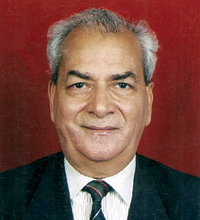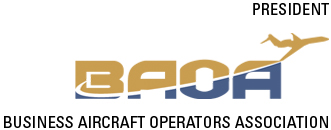Message from President, BAOA
 |  |
An Opportunity to Make Air Travel Safer!
COVID-19 Pandemic may be a curse, but it also presents a unique challenge to make necessary changes to the aircraft so as to make its design safer for future travel
“Cash is King”, but “The One Who Will Provide Cash (in these Corona-hit times) Is The Emperor!”
The field of aviation is as distinctly different in its infrastructure & operational details, as are many other fields that form the backbone of a nation’s economic activity today. In turn, the main sub-parts of aviation consist of:
- The Aircraft Production & Distribution (Sales & associated) Centres,
- The Aircraft Exploitation (the scheduled-, the non-scheduled- & the private owner-user) Centres & the Support (MRO/associated support) Centres,
- The National Governments, the National Regulatory Authorities, the International Monitoring Agencies & other associated Regulatory/Support elements.
These sub-parts/sectors interactively affect each others’ performance & results. As such, in the ‘Commercial Aviation Sector’, the existence & performance of the smaller ‘Business Aviation’ in India cannot be viewed in isolation from the existence & performance of its nearest ‘Big Brother’ i.e. the ‘Scheduled Airlines’.
In the current century, so far there have been three major downturns in aviation - the first in the year 2001 after the “9/11 event”, the second in the year 2008 caused by the “Economic Recession”, & the third this year (since around March 2020), triggered worldwide by the “COVID-19 Pandemic”.
After the first two downturns, with the consistent human endeavour & efforts that followed, aviation bounced back with increased momentum over a period of time. As such, it is expected that the future of aviation, after the current downturn, would be no different & that it will certainly bounce back within (as yet unpredictable but hopefully) a short span of time. With this optimistic note, we need to assess the current indicators, challenges & opportunities in different sectors of the aviation infrastructure.
A random sampling ‘in bullet form’ is presented below, for a “Quick Gun Murugan” style of reading:
- According to Moody’s, Commercial Aviation will be ravaged by the COVID-19 pandemic for years to come. Every stake holder, from plane manufacturers to plane lessors, airlines to airports, MROs to parts suppliers, (et al), will be squeezed, with effects rippling across the entire global economy.
- Major rivals Airbus & Boeing have each announced plans to cut over 10,000 jobs, with more to follow.
- Airbus has reportedly suffered more than $3 billion net loss in the first 3 Quarters of 2020.
- Boeing suffered over $3.5 billion losses for the same period, mainly due to both world-wide grounding of its 737 Max fleet in 2019 & the onset of the ‘Covid event’ since early 2020.
- Large aircraft such as the Boeing 747 & the Airbus A380 are not needed anymore, as they are difficult to fill. Once again, “Small is Beautiful & the Smaller the Better!”
- The last downturn resulted in a number of private aircraft being put up for sale at low distress prices. In the present COVID-19 induced downturn, there has been an actual decline, however small, in the number of used business aircraft put up for sale, compared to the corresponding period last year, prices somewhat holding with a downward trend limited to only about 10 to 15 per cent.
- As of August 2020, the General Aviation (GA) fleet in China stood at over 2,900 aircraft, includes over 150 GA aircraft added in the current year (Total Civil aircraft count was 6,134 in 2018). In comparison, in India the total number of BA/GA aircraft are on the decline, the present number (both fixed wing & helicopters) stands at a mere 500 only (Total Civil aircraft count around 1,190) - a whopping difference of more than 500 per cent in total Civil or just the BA/GA aircraft!
- In Q3 of 2020, American Airlines Group announced a $2.4 billion loss & Lufthansa reported an operating loss of €1.26 billion ($1.46 billion).
- In Q2 of 2020, the aviation industry of China, the originator of COVID-19 event, suffered a loss of just over 34 billion Yuan ($5 billion) & the Singapore Airlines Group suffered over SGD 1.1 billion ($800 million) loss.
- IndiGo, the largest Indian airlines, declared a net loss of 2,844 crores in Q1, 2020.
- Many other well-established International & National airlines, from Alaska to Australia/New Zealand via Europe, Middle East & the Asian subcontinent, have also reported depressingly huge losses in their quarterly 2020 financial results so far!
- As per DGCA, the total domestic passengers that travelled by air in September this year has been 39.43 Lacs, which is 66 per cent lower than the corresponding period last year. The present ATF demand stands at only 48.5 per cent of normal.
- Reportedly many of the HNIs (High Net-worth Individuals), who would otherwise fly with scheduled airlines, are apparently moving towards Charter service. Many of these are entrepreneurs running small or medium scale enterprises or Chief Executives. Even here, small capacity business Jets or turboprops are the preferred choice as a more cost-effective solution.
- Current situation leaves little room for accurate predictions. IATA affirms view that air traffic will recover only in 2024.
- Global aviation trade associations/bodies have made a joint call ‘to the powers that be’ for a globally consistent approach for a faster recovery.
- Till date, more than 100 aviation-business related establishments/enterprises in distress world-wide have received more than $100 billion state aid in the form of grants, soft loans, operational subsidies, tax waivers or concessions, (etc).
- USA enacted the CARES (Coronavirus Aid, Relief & Economic Security) Act. This includes tax provisions that affect Business Aircraft Operators, in that the FET (Federal Excise Tax) does not need to be collected on amounts paid for Charter flights.
- The US Congress provided a $32 billion in payroll assistance to the US aviation industry in March 2020, while Senate Republicans agreed to the Airport Association’s plea for an additional $10 billion.
- Do the Government of India/Ministry of Civil Aviation have any specific “Indian-Aviation-Business-in-Acute-Distress” rescue/recovery plan?
And Finally: - COVID-19 Pandemic may be a curse, but it also presents a unique challenge to make necessary changes to the technological marvel called ‘aircraft’ so as to make its design safer for future travel requirements.
- The infectious disease specialists consider the growing mobility of people via air transport as amplifying the potential for rapid transmission & dissemination of diseases. This is what happened in case of COVID-19 which originated in China but quickly spread to the rest of the world, silently infecting millions & killing thousands! What changes are required in ‘Aircraft Systems Design’ to overcome this flaw & improve the air traveller’s perception?
- Some progress has been made in making air travel safer with technology-based solutions & more is underway. Illustratively, these measures include:
- Improved, virus-safe air conditioning/air circulation systems at airports & inside aircraft under development.
- Rapid testing facilities, both pre-departure & post-arrival, being implemented at airports to restore air traveller confidence.
- Use of ultraviolet rays for disinfecting multi-touch surfaces & use of Robots to perform certain repetitive functions that were normally carried out earlier by human beings.
- Introduction of technology-based ‘Touch-less Systems’ at airports & inside aircraft cabins.
- Mandatory health screening of passengers & staff as a standard practice at airports.
Statutory Caution: On the Side-lines, innovative ‘Mind Games’ are also under development. Consider this - “Most destinations require a negative coronavirus test result in order to enter a country or a city in the country. Instead of getting tested, some passengers are forging their certificates! As such, an “anti-forging vaccine” also needs to be developed in parallel by the law enforcement agencies!”
JAI HIND
AVM S.S. Chauhan (Retd)
PVSM AVSM VSM
President, BAOA.





